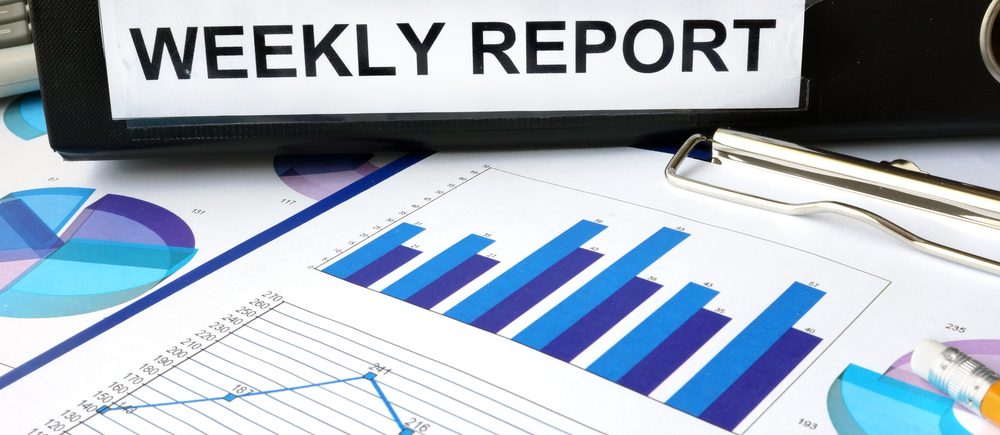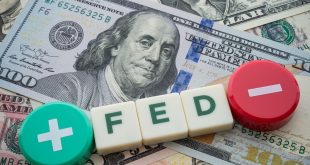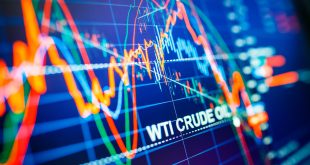The dollar fell from the highest level in two and a half months against the yen on Friday and headed towards recording its first weekly loss since January against other major currencies as dealers try to determine the course of the Federal Reserve’s monetary policy.
The yen, particularly sensitive to long-term interest rate differentials between the United States and Japan, threatened to extend its weekly losing streak to seven weeks, even as it gained momentum on Friday as the 10-year US Treasury yield fell from its highest level in nearly four months.
The statements of Rafael Bostick, Chairman of the Federal Reserve Board in Atlanta, had led to the dissipation of some of the strength of the dollar and the rise of Treasury yields, as he said Thursday evening that “slow and steady will be the appropriate course of action,” despite the new employment data that added to a series of solid data at recent days.
The dollar index, which measures the performance of the US currency against the yen, the euro and four other major currencies, fell 0.11 percent to 104.85, from the high level of 105.36 recorded a few days ago, the highest level since January 6.
It has decreased since last Friday by 0.36 percent.
Analysts polled by Reuters said the dollar’s recent strength is temporary, and the currency will weaken throughout the year as the global economy improves and the Fed is expected to stop raising interest rates much earlier than the European Central Bank.
The Bank of Japan is also expected to remove extraordinary stimulus measures after Governor Haruhiko Kuroda retires next month.
Tokyo inflation data for February exceeded the Bank of Japan’s target for a ninth month, but the core gauge slowed from a 42-year high.
The dollar fell 0.15 percent to 136.575 yen, after rising to 137.10 overnight, the highest level since December 20.
The euro rose 0.08 percent to $1.0606. Since last Friday, it has advanced 0.59 percent.
Data
The ISM Services PMI for February came in at 55.1, reflecting the solid rate at which business activity in the US service sector continues to grow. This figure exceeded the market forecast of 54.5 while being somewhat below the January reading of 55.2.
The Price Paid sub-index, which measures inflation, decreased slightly from 67.8 to 65.6 in February but still above experts’ expectations of 64.5. In the same time frame, the Employment Index increased from 50 to 54 and the New Orders sub-index increased from 60.4 to 62.6.
The most recent statistics released by Eurostat on Thursday revealed that the annualised Harmonized Index of Consumer Prices for the Eurozone (HICP) came in a bit lower at 8.5% in February compared to January’s 8.6%. The market anticipated a decrease in inflation to 8.2% over the reporting period.
Compared to the 5.3% predicted and the 5.3% seen in the January data, the core HICP increases to 5.6% YoY in February.
The HICP for the old continent surprisingly increased by 0.8% in February vs -0.3% forecasts and -0.2% in January. In contrast to the 0% projected and the -0.8% recorded in January, the core HICP came in at 0.8% last month.
A trading day after Germany’s annual HICP for February, which increased by 9.3%, exceeding predictions of 9.0% and following a 9.2% gain in January, the Euro area inflation data is presented.
The 2% inflation goal set by the ECB.
The HICP data for the bloc are important because they would aid markets in repricing their expectations for the European Central Bank to raise interest rates. According to market estimates, a 50 bps rate rise in May has a 65% chance of happening, and a rate hike of the same amount in March is all but guaranteed, according to numerous ECB policymakers.
Europe
European stocks rose on Friday after hopes that the Federal Reserve would adopt a cautious approach to raising interest rates led to the rise of technology shares, while mining stocks continued to achieve gains amid increasing bets on the recovery of demand in China.
The pan-European Stoxx 600 index rose 0.9 percent, supported by a 1.8 percent rise in interest rate-sensitive technology shares.
Federal Reserve Bank of Atlanta President Rafael Bostick said Thursday night that he would prefer a “slow and steady” hike in interest rates, rather than a halt in mid-summer or later.
The next two weeks will see the monetary policy meetings of the Federal Reserve and the European Central Bank as well as the publication of US jobs data. On Sunday, the annual parliament session will be held in China, during which Beijing will set its economic goals for this year.
Mining stocks rose 2.2 percent.
The mining index jumped more than seven percent this week, recording the largest weekly increase since May 2021 and outperforming other major sectors such as real estate and healthcare. The STOXX 600 rose 1.4 percent during the week.
Oil
Oil prices recovered from a short sell-off, rising by a dollar a barrel on Friday and ending the week positively, driven by renewed optimism about demand from China, the world’s largest oil importer.
Brent crude futures rose $1.08, or 1.3 percent, to $85.83 a barrel. US West Texas Intermediate crude futures settled at $79.68 a barrel, up $1.52, or 1.9 percent.
Both benchmarks recorded their highest closing levels since February 13.
Prices fell earlier in the session by more than $2 a barrel after a media report said the UAE witnessed internal discussions about leaving OPEC and pumping more oil.
Prices rebounded when two sources familiar with the matter told Reuters the report was “far from the truth”.
Brent and West Texas Intermediate achieved the third largest weekly percentage gains this year, as strong Chinese economic data boosted hopes for oil demand growth.
Service sector activity in China grew in February at the fastest pace in six months, and manufacturing activity there also increased. In addition, China’s seaborne imports of Russian oil are set to hit a record this month.
The ECB will soon be dealing with high core inflation, according to Lagarde
According to ECB President Christine Lagarde, the euro zone’s underlying inflation will remain high in the short term, making a 50 basis point hike in interest rates later this month highly likely.
The ECB has already increased rates by 3 percentage points since July and effectively promised another half-point hike on March 16. Yet, given recent inflation figures, investors have begun to speculate about an even greater jump.
But, Lagarde also cautioned that underlying inflation, which excludes volatile food and fuel costs, might remain uncomfortably high even as the overall inflation rate declines in the upcoming months. She said the anticipated spike is now “very very likely” to occur.
Recently, a number of decision-makers cautioned that ECB rate increases must continue until core inflation reverses course and begins to decline towards the central bank’s 2% objective.
This month’s underlying inflation increased to a record high of 5.6%, and some policymakers are concerned that this rise is now the result of a spike in pay growth in the services sector, which makes price rises more tenacious and hard to reverse.
“We must continue to take whatever measures are necessary to bring inflation back to 2%. And we will do so,” Lagarde said.
She continued by saying that the eurozone economy is faring better than anticipated and that output should go up after approaching stagnation in the last quarter of 2022.
China
A government report released at the opening of the annual meeting of China’s parliament said on Sunday that the government is targeting a level of annual economic growth in 2023 that is slightly lower than last year’s target, as the world’s second-largest economy begins to emerge from the three-year strict restrictions of COVID-19. Years.
The report stated that China targets the growth of its economy in 2023 by about 5%, compared to the target level in 2022, which amounted to about 5.5%.
China’s economy expanded 3% last year, far behind the government’s target for 2022 and one of the slowest growth rates in nearly 50 years.
 Noor Trends News, Technical Analysis, Educational Tools and Recommendations
Noor Trends News, Technical Analysis, Educational Tools and Recommendations





